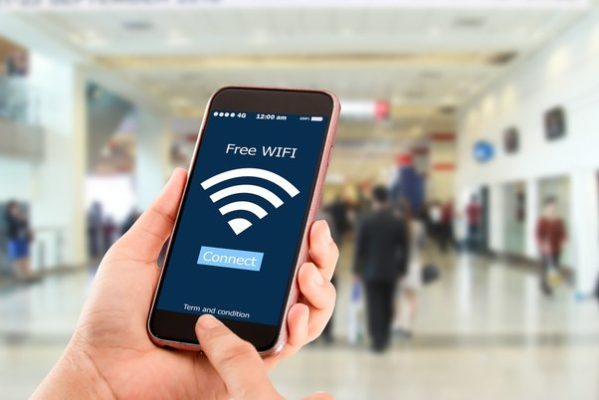How to Optimize Your Wireless Network
Today, more demands are being placed on the wireless network than ever before. Companies depend on wireless networks to connect IoT devices and remote workers in hybrid workplace environments.
Heavily trafficked locations, such as restaurants, airports, and hotels, need to provide fast, secure, and redundant wireless network connectivity over large-scale environments to satisfy customers.
However, organizations face challenges in providing seamless, high-speed wireless connectivity. With the advent of 5G coverage, organizations need to update their wireless technology. Some companies may not even be aware of gaps in their wireless network and the negative impact these gaps are having on their business.
Receiving a wireless site survey from a technology provider that specializes in the network will help your company uncover and bridge gaps in your wireless connectivity.
Wireless Network Challenges
Companies face many network challenges as connectivity demands increase. Organizations with large, complex environments face the toughest challenges.
An organization’s wireless network may have coverage holes. Users experience coverage holes as Wi-Fi dead spots. Coverage holes may be created by improperly placed access points or physical obstructions, such as concrete walls or heavy equipment.
Low signal strength slows the Wi-Fi network. Too many devices may be using the network, taxing the available bandwidth. When the wireless network has low signal strength, users experience interference and have difficulty downloading information or keeping a connection.
An improper signal-to-noise ratio (SNR) means wireless devices are unable to distinguish between legitimate information and background noise when receiving signals. Noise may be created by devices that are too far away to send an intelligible signal or those that are inadvertently creating interference on the same frequency.
Co-channel interference occurs when one mobile communication influences another channel. If too many devices are operating using the same channel, users may experience crosstalk created by co-channel interference. Crosstalk means users can hear fragments of other conversations.
Frequency reuse may also cause co-channel interference when companies are trying to allocate frequencies to cover a large area.
How Wireless Network Gaps Affect Your Business
Gaps in a wireless network negatively impact the business by slowing productivity and lessening the quality of customer experience. Latency and slow network speeds create delays in the transmission of information and the downloading of files.
When your business has gaps in its network, your reliability decreases. Customers and clients can’t be sure if you are available when they need you to answer questions or provide products and services. As a result, they may turn to competitors.
Interference and the inability to maintain a network connection frustrates users. Employees take longer to communicate and accomplish tasks. During video conferences, audio and video quality is poor, taking away from the face-to-face experience.
How to Avoid Wi-Fi Network Gaps
Wi-Fi network gaps are avoidable. Companies need to find the gaps first by evaluating their network, and then they need to develop a strategy for bridging the gaps.
Companies can use an algorithm for hole detection. Analytics can uncover areas of inadequate coverage in the WLAN. Once the hole has been detected, the tool can give suggestions for whether to deploy additional access points or move existing ones.
Proper channel planning enables companies to meet challenges by widening channels. Widening channels increases the data transmission rate by allowing more data to travel through, eliminating bottlenecks. The proper channel width will increase performance without creating co-channel interference.
Client roaming empowers wireless clients to examine the signal strength of access points and determine whether to switch to a new one or maintain the current connection to obtain better results.
Adopting Wi-Fi 6 is a great way to bridge gaps in your network. Moving to Wi-Fi 6 enables your company to meet the current standard for wireless connectivity and satisfy user experience expectations.
Benefits of Wi-Fi 6
Wi-Fi 6 provides greater speed, capacity, and control to support existing applications and emerging innovations in software.
According to Cisco, Wi-Fi 6 delivers 4 times the speed and capacity of its predecessor. These improvements deliver seamless experiences for users and customers.
Users experience less congestion and latency with Wi-Fi 6 through packet scheduling, improving the wireless experience across the wireless landscape. Wi-Fi 6 has the performance levels and reliability needed to support mobile and IoT devices in large-scale environments.
Wi-Fi 6 also has improved security. Extending security to the infrastructure, Wi-Fi 6 detects threats, encrypts unauthenticated traffic on open Wi-Fi networks, and protects passwords against brute-force attacks.
When companies move to Wi-Fi 6, they must compensate for the fact that there isn’t a one-to-one correspondence between the old network and the new network. The business needs to deploy more devices to serve as access points for the Wi-Fi 6 network.
Getting a Wireless Site Survey
Receiving a wireless site survey helps your company benefit from all the advantages of a modern wireless network. A wireless site survey can determine if your company’s current network provides adequate coverage and signal strength for your users and customers. Site surveys should be conducted periodically so your company can adjust or before changing your environment to predict future needs.
Intellispring has a long history of providing Wi-Fi services in heavily trafficked locations and working with Federal agencies, public sector organizations, and enterprises. Our wireless teams deliver design, procurement, staging, implementation, installation, remote in-band monitoring, management, and maintenance of your WLAN infrastructure. We also conduct Wireless Site Surveys so your company can discover and eliminate coverage holes.
As a Cisco Premier Certified Partner, Intellispring has the certified expertise to help your company modernize your network to meet the needs of increasingly mobile business environments through Cisco Unified Wireless.
Get on the path to closing the gaps in your company’s wireless network. Reach out to Intellispring and ask for a Wireless Site Survey today.


